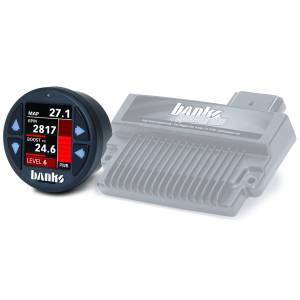

If you have driven over 100,000 miles on the factory turbo and suffering turbo problems, it probably needs replacing. As with any other car component, everything has a life span and the turbocharger is no exception.
#BANKS TURBO BOOST GAUGE KIT RAM 3.0 CRACK#
Pipes leading to the turbo often crack overtime and is fairly common (see below photo). A turbo uses forced gases to push back into the cylinders and if there is a crack or faulty seal, some of that gas will be lost. Below are some of the main reasons for turbos to fail: Its important to know the reason why the turbo failed because you may fit a new or refurbished turbo that could fail through an underlying fault. Likewise when you have a blocked DPF, it will often cause the car to go into limp mode or whilst going through regeneration of the DPF, there could be excessive smoke. For example, a faulty EGR can cause excessive exhaust smoke and poor acceleration if blocked. The majority of modern cars with a trip computer will trigger the engine management light, which will usually be matched with another symptom above.īefore you point all fingers at your turbocharger, you will want to ensure that the car has good all round health. If you are noticing your car using more oil, this could be a sign that your turbo is leaking oil and leaking into the manifold. You can tell a lot from exhaust smoke and a faulty turbo will cause excessive exhaust smoke of a range of colors. If you are not feeling the usual power when accelerating, the first thing to check would be the turbo. It may be a loose pipe or the blades failing within the turbo.

If you here a “police siren” type of noise that is gradually getting louder, this is a bad sign. Turbocharged cars do make good noises such as spooling or a blow off valve noise but there are also bad noises.


#BANKS TURBO BOOST GAUGE KIT RAM 3.0 UPGRADE#


 0 kommentar(er)
0 kommentar(er)
